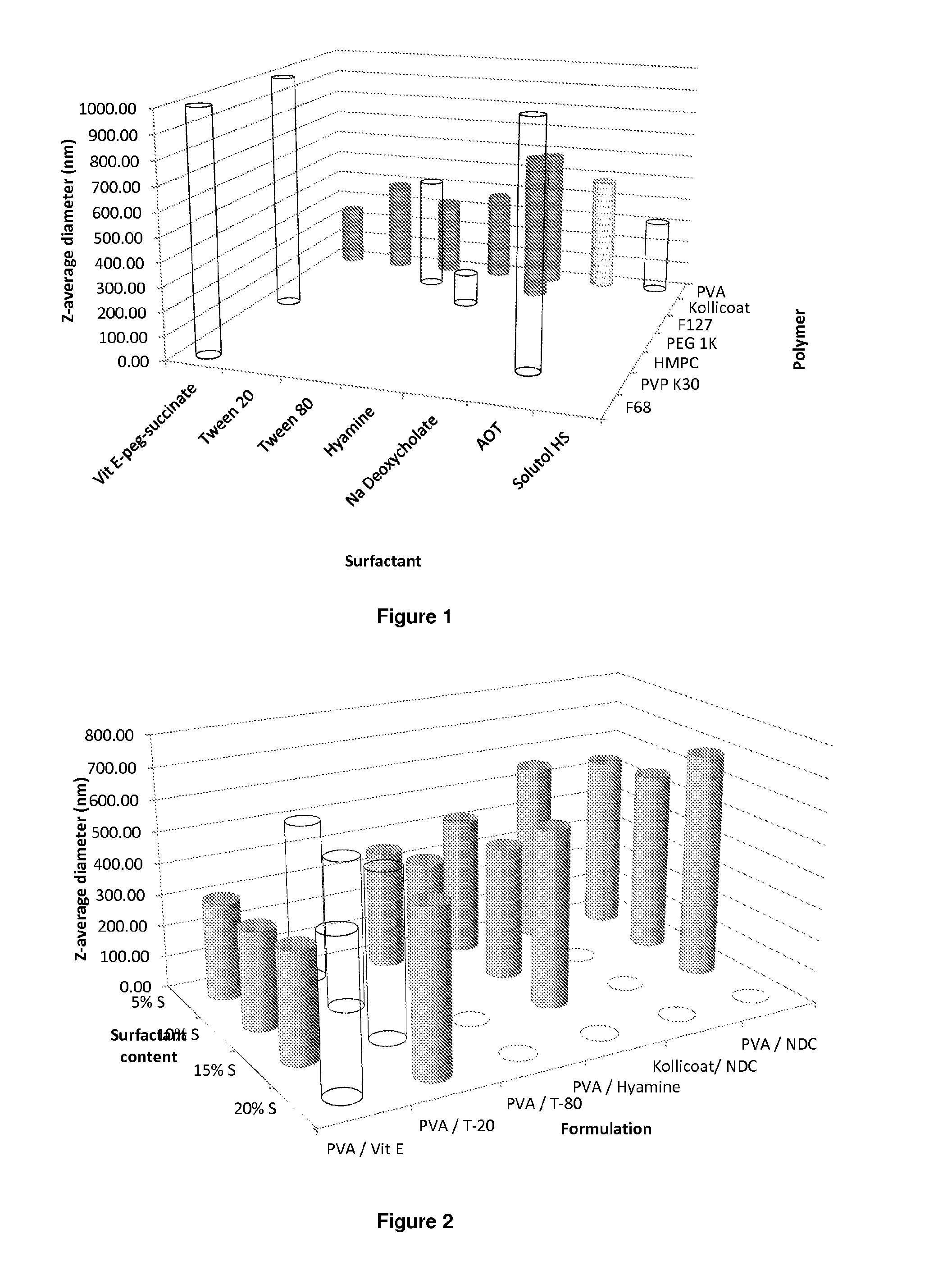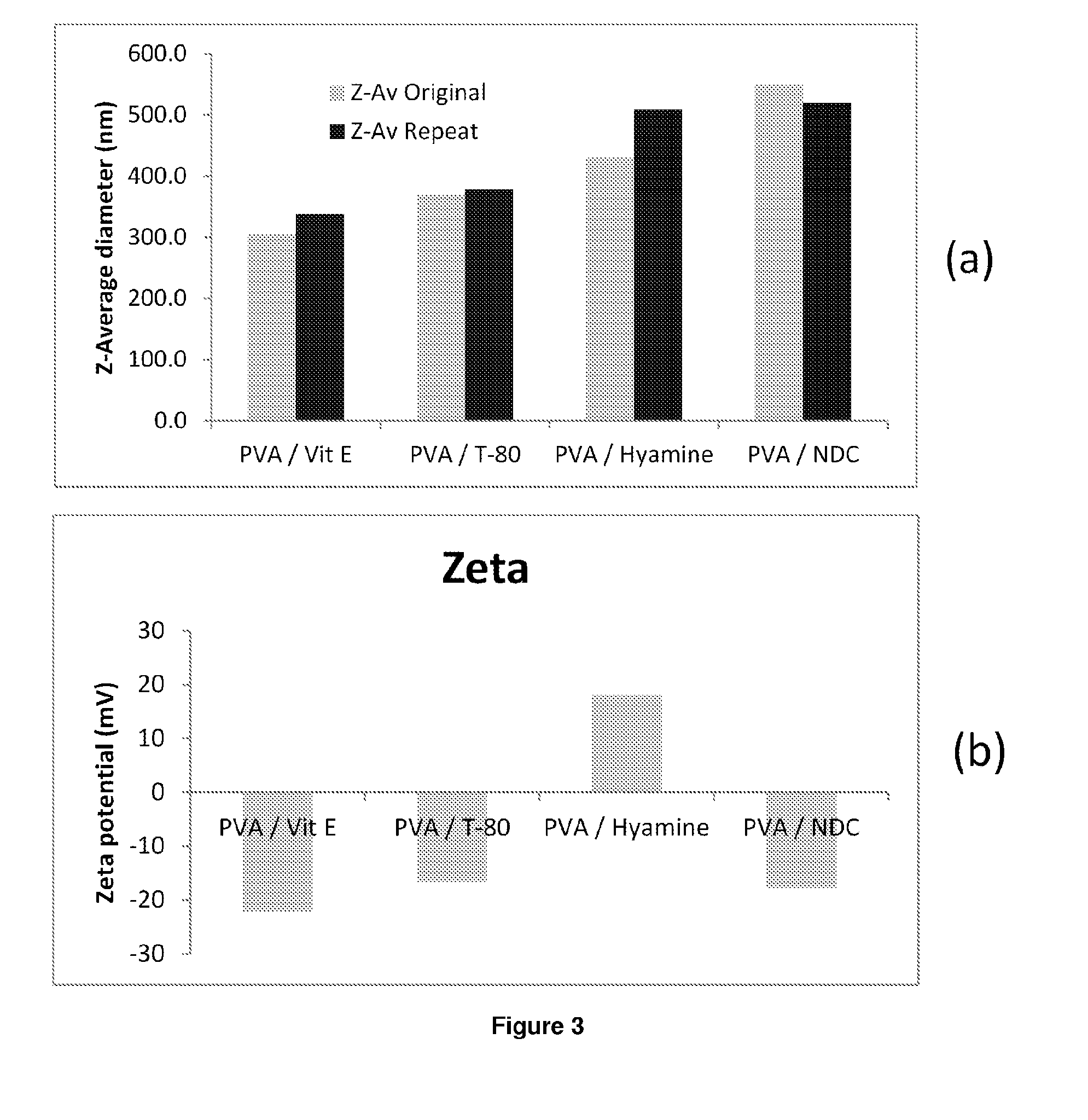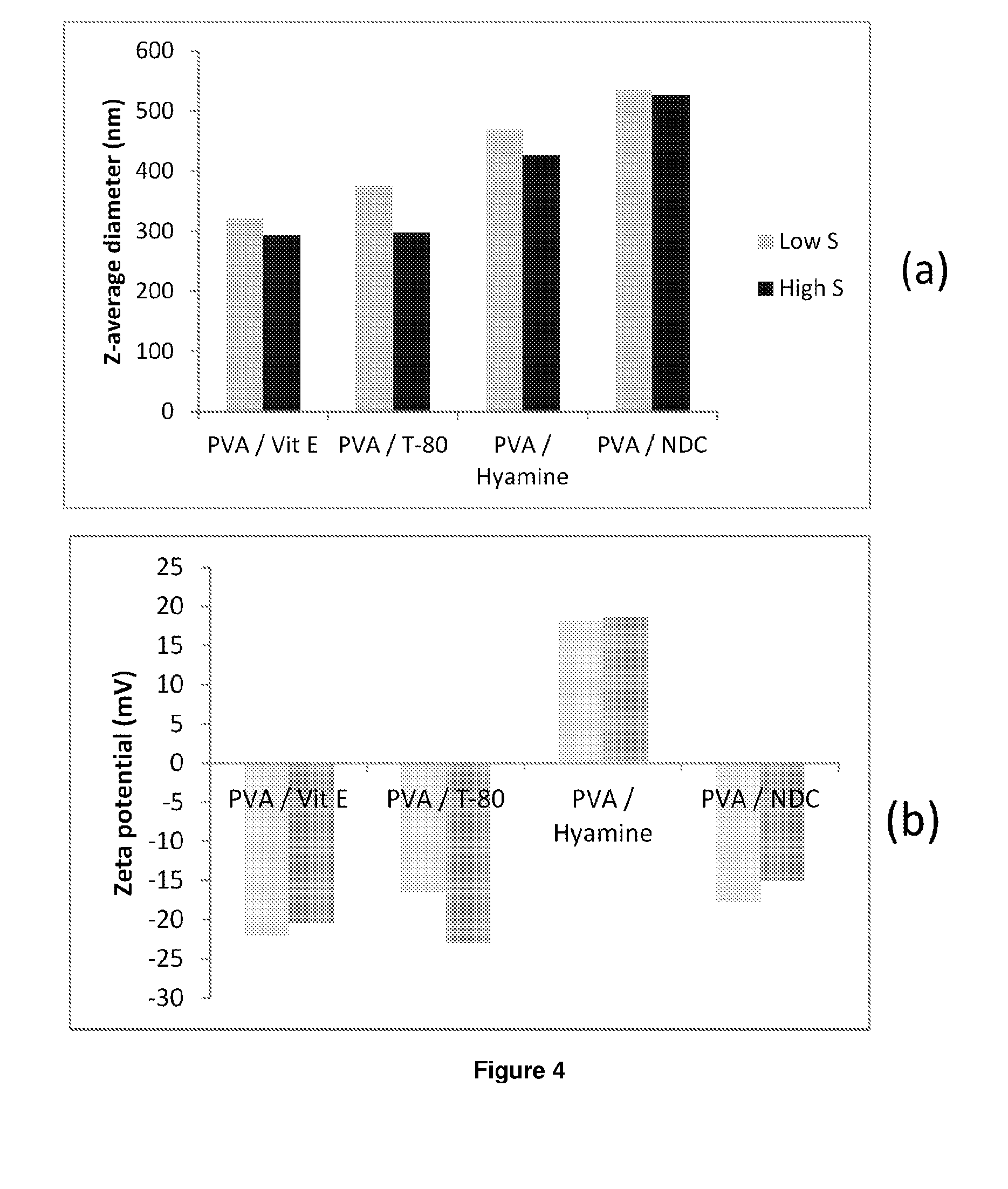Compositions of efavirenz
a technology of efavirenz and composition, which is applied in the field of composition of efavirenz, can solve the problems of insufficient distribution of efavirenz throughout the body, variable penetration of the drug into the cells, and inability to meet the needs of patients, and achieves the effect of high drug loading
- Summary
- Abstract
- Description
- Claims
- Application Information
AI Technical Summary
Benefits of technology
Problems solved by technology
Method used
Image
Examples
example 1
Screening for Nanoformulations—10 Hydrophilic Polymers, 16 Surfactants
[0231]Samples are prepared using a 10 mgml−1 stock solution of efavirenz (A) in chloroform, a 22.5 mgml−1 of polymer (P) and a 22.5 mgml−1 stock solution of surfactant (S). Stock solutions are added in the following proportion; 100 μl (A); 267 μl (P) and 133 μl (S), therefore solid mass ratio is; 10% (A), 60% (P) and 30% (S) in an 1:4 oil to water (0 / W) mix. The mixtures are then emulsified using a probe sonicator (UP400S manufactured by Hielscher (Germany)), fitted with an H3 titanium probe) operated at 20% amplitude for 7 seconds followed by immediate cryogenic freezing.
[0232]A matrix of 160 samples (comprised of 10 different polymers and 16 surfactants) was prepared. Once all 160 samples had been prepared, they were lyophilised (Virtis benchtop K) for 42 hours to leave a dry porous product, the samples were then sealed in individual vials until analysis.
[0233]The polymers and surfactants employed in this screen...
example 2
Efravirenz Low Surfactant Screen
[0236]A further 160 screen was prepared for EFV using a lower quantity of surfactant and a higher proportion of polymer. The samples were prepared by the identical method mentioned in Example 1, however ratios employed were 100 μl (A), 333 μl (P) and 67 μl (S), therefore solid mass ratio is; 10% (A), 75% (P) and 15% (S) in an 1:4 oil to water (OW) mix. All other processing, including screening, were the same as described in Example 1. The hits, which were determined in accordance with the nanodispersion quality assessment criteria described in Example 1, are listed in Table 2 below.
TABLE 2hits of suitable hydrophilic polymersand surfactants (77 hits in all)Hydrophilic PolymerSurfactantPEG 1KNa alginatePEG 1KNaDeoxycholate.PEG 1KNa caprylate.PEG 1KSisterna 16PEG 1KSDSPEG 1KAOTPEG 1KChremophorELPEG 1KSolutol HSPEG 1KTween 20PEG 1KTween 80PEG 1KBrij 58PEG 1KHyaminePluronic F68Na alginate.Pluronic F68Na caprylatePluronic F68AOTPluronic F68ChremophorELPlur...
example 3
Nanoformulations Assessed in Biological Assays
[0237]‘Hits’ (i.e. those listed under Examples 1 and 2 in Tables 10 and 2) from the previous screen were remade in accordance with the procedures described in Example 1 in replicate (one sample to be characterised by DLS and zeta potential analysis, with an additional sample for each biological assay to be carried out).
PUM
| Property | Measurement | Unit |
|---|---|---|
| particle size | aaaaa | aaaaa |
| particle size | aaaaa | aaaaa |
| particle size | aaaaa | aaaaa |
Abstract
Description
Claims
Application Information
 Login to View More
Login to View More - R&D
- Intellectual Property
- Life Sciences
- Materials
- Tech Scout
- Unparalleled Data Quality
- Higher Quality Content
- 60% Fewer Hallucinations
Browse by: Latest US Patents, China's latest patents, Technical Efficacy Thesaurus, Application Domain, Technology Topic, Popular Technical Reports.
© 2025 PatSnap. All rights reserved.Legal|Privacy policy|Modern Slavery Act Transparency Statement|Sitemap|About US| Contact US: help@patsnap.com



